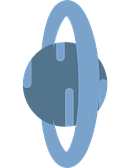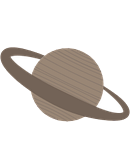Time on Uranus Now
Uranus, the icy giant tilted on its side, has a rotation and orbit that are vastly different from most other planets in the Solar System. The Uranus Planetary Clock adapts the Unix epoch (January 1, 1970) to the specific rotational and orbital dynamics of Uranus, giving you an accurate reflection of time as it passes on this distant planet.

04:48:39
Day 28463 of 42737, Year 1970
How it Works
The Planetary Clock adjusts Earth’s Unix time for each planet by factoring in its rotational and orbital periods. For Uranus, these adjustments take into account the time it takes Uranus to complete one full rotation on its axis (a 'day'), and the time it takes Uranus to complete one full orbit around the Sun (a 'year').
By calculating time based on these factors, the Planetary Clock allows you to see the current date and time on Uranus as synchronised with the Unix epoch.
Uranus's Unique Rotation and Orbit
Uranus is known for its extreme axial tilt and slow orbit, making its relationship with time quite unusual.
A day on Uranus lasts approximately 17 hours and 14 minutes. This is shorter than an Earth day, though not as extreme as the day lengths on some other planets. The Planetary Clock adjusts to show time moving more swiftly on Uranus, meaning the days pass relatively quickly compared to its years.
Uranus has one of the longest orbits in the Solar System, taking about 84 Earth years to complete one full orbit around the Sun. This means that Uranus experiences very few 'years' relative to Earth. The Planetary Clock reflects this by showing very slow progress in Uranus’s years, while days continue to cycle more quickly.
Because of Uranus’s combination of a long orbital period and shorter day length, the Planetary Clock must balance these factors. On Uranus, the years pass extremely slowly, while the days move at a more moderate pace. This unique timekeeping system provides a glimpse into how time behaves on this distant, tilted planet.






